Twelve Common Types of Scaffolding in Construction
As a general definition, scaffolding is a temporary structure that is used to support workers and materials during construction or maintenance work. However, scaffolding is used for a wider range of specific purposes, depending on circumstances. To suit these distinctions, there are many types of scaffolding. Here are twelve common types of scaffolding used in construction.
Bamboo Scaffolding
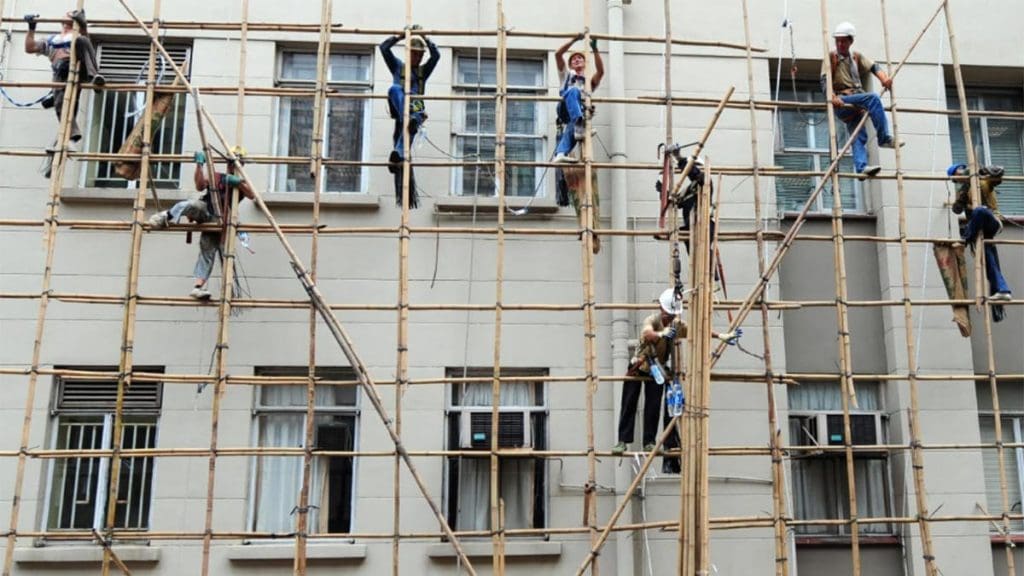
As its name implies, bamboo scaffolding is a type of scaffolding that is made out of bamboo.
This type of scaffolding is more commonly used in Asia, especially in Hong Kong. It’s utilized in everything from low-rise projects, such as small theatre houses, to high-rise projects that scale up to 60 stories tall.
To construct a bamboo scaffold, pieces of bamboo of several meters long are tied together using nylon straps. These pieces are tied repeatedly to create multiple vertical squares of around 75 cm by 75 cm, until it covers the building’s structure. The bamboo structure serves as both a working and climbing platform for the workers, as well as support for the building.
Despite the rise of other scaffolding types, bamboo scaffolding is still favored in much of Asia because it’s strong, lightweight, cost effective, and easy to assemble and disassemble. The biodegradable material is also eco-friendly. Besides that, it’s appreciated by many local craftsmen as part of their cultural heritage.
Cantilever Scaffolding
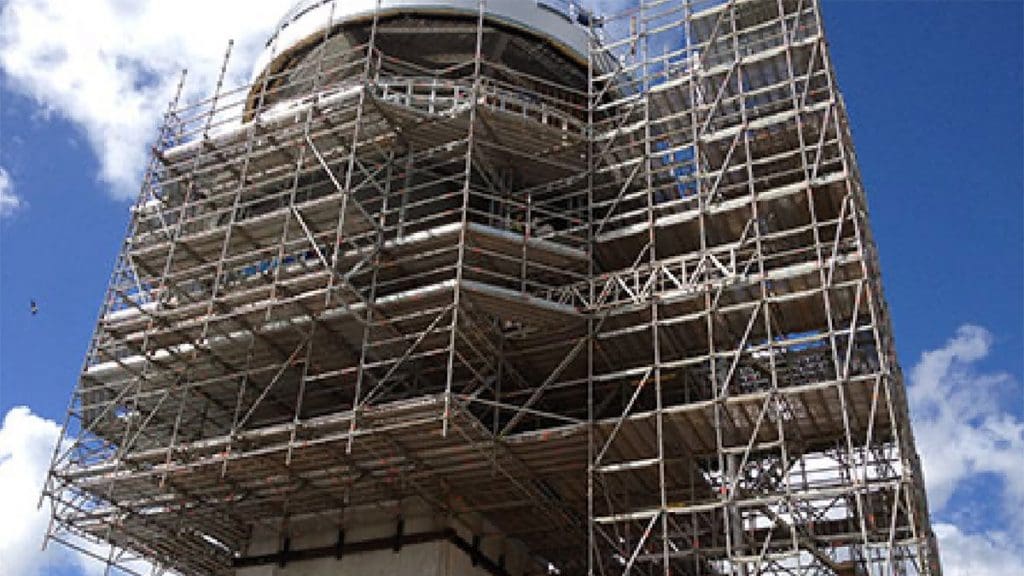
Cantilever scaffolding, also known as needle scaffolding, is a type of scaffolding that is angled out from a construction structure, whether that’s a building or an extension of another larger scaffold.
Cantilever scaffolding is used in situations that prohibit an access platform from being based on the ground. These include architectures with an uneven base surface or when there are obstacles on the ground. It’s also used when there is no base surface to work with, and the scaffold needs to be angled out from the building’s main structure. Hence, cantilever scaffolding is usually used in the construction of sloping roofs, glazed roofs, and stairs.
To set up cantilever scaffolding, a ‘needle’ is projected or ‘cantilevered’ out of the supporting structure, like the construction building’s wall or a scaffold tower built from the ground. This needle is fully braced on every side and a working platform is built upon it. Barriers and edge protection are also placed to minimize fall hazards.
Cantilever scaffolding provides a safe working space when building a scaffold from the ground is not possible or cost-effective.
Cuplock Scaffolding
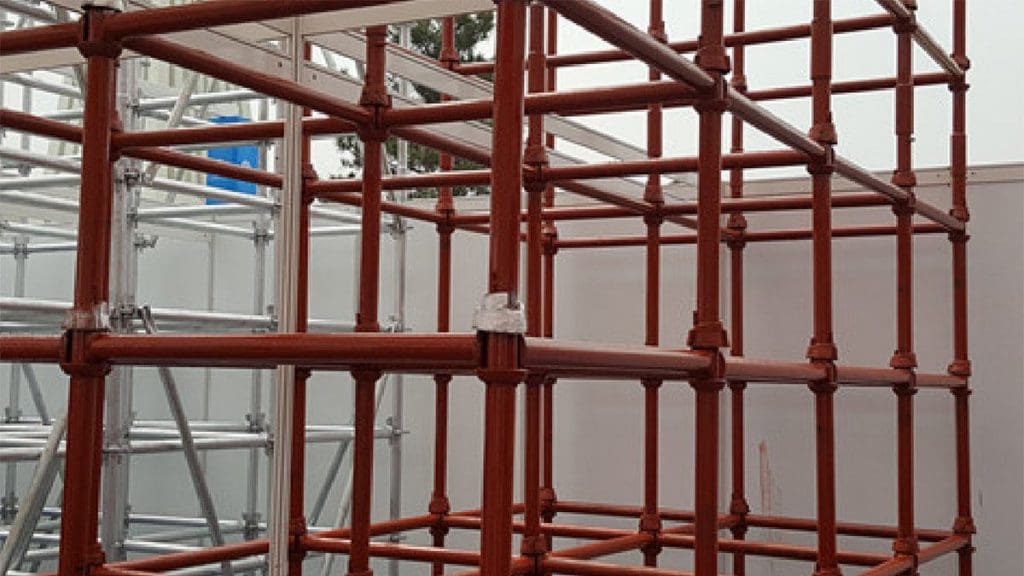
Cuplock scaffolding is a type of system scaffolding with a unique locking system. Its official name is Cuplok – a product of scaffolding manufacturer SGB. It’s one of the most popular types of scaffolding in modern construction.
Due to its versatility, Cuplock scaffolding is seen all over the world, from simple domestic buildings to complex industrial structures. It can also be used in renovation scaffolding, façade scaffolding, masonry scaffolding, and staircase towers, as well as in more specialized applications, such as shipbuilding. Besides that, it’s especially suitable for curved structures as the horizontals can be locked from almost any angle.
To install, up to four horizontal tubes are attached to a standard, which is then locked into position with a single hammer blow. The locking device is formed by fixed lower cups that are welded to the standards at 0.5 m intervals, and sliding upper cups. The upper cups drop over the blade ends of the horizontals and rotate to lock them firmly into place.
Cuplock scaffolding has many strengths. The locking system is not only flexible, but saves time and cost as it’s easy to assemble. It requires fewer connectors and has fewer loose fittings. On top of being heavy duty, it has a strong connection point. Accessories such as ladder safety gates and advanced guardrails can be added for maximum safety.
Frame and Brace Scaffolding
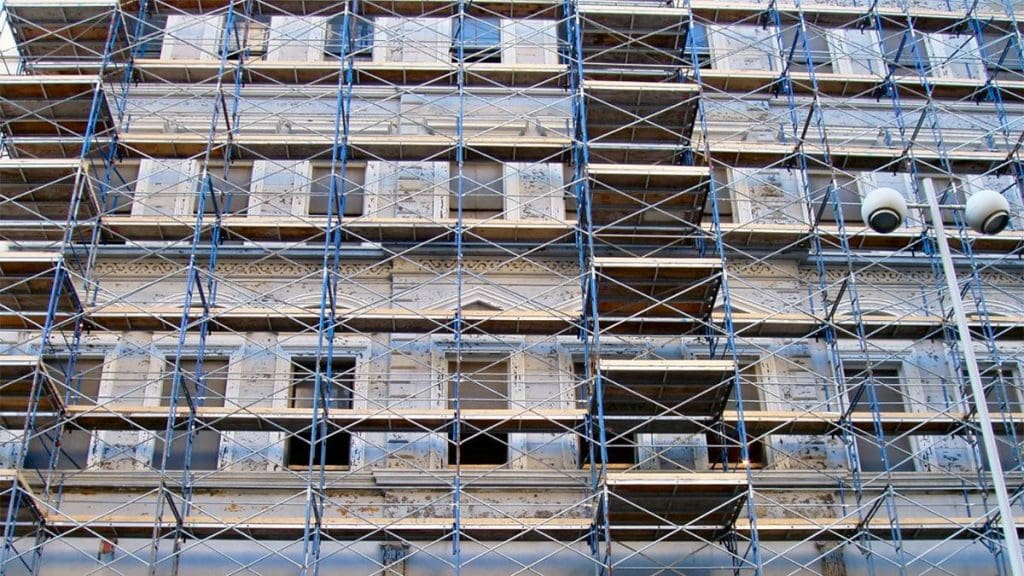
Also known as sectional scaffolding, frame and brace is a type of scaffolding with stacked vertical frames, connected by cross-braces.
This type of scaffolding is commonly seen in North America and parts of Europe. It’s suitable for residential and commercial projects, especially those where scaffolding could be made mobile.
To erect a frame and brace scaffolding, pre-engineered sectional pieces are stacked and braced using cross-bracing. The cross braces run along each bay and are set in square-shaped configurations. Planks are then laid across the frames to provide a working platform.
Frame and brace is popular for being light, economical, and easy to erect. However, it’s not as strong as or versatile as system scaffolding.
Kwikstage Scaffolding
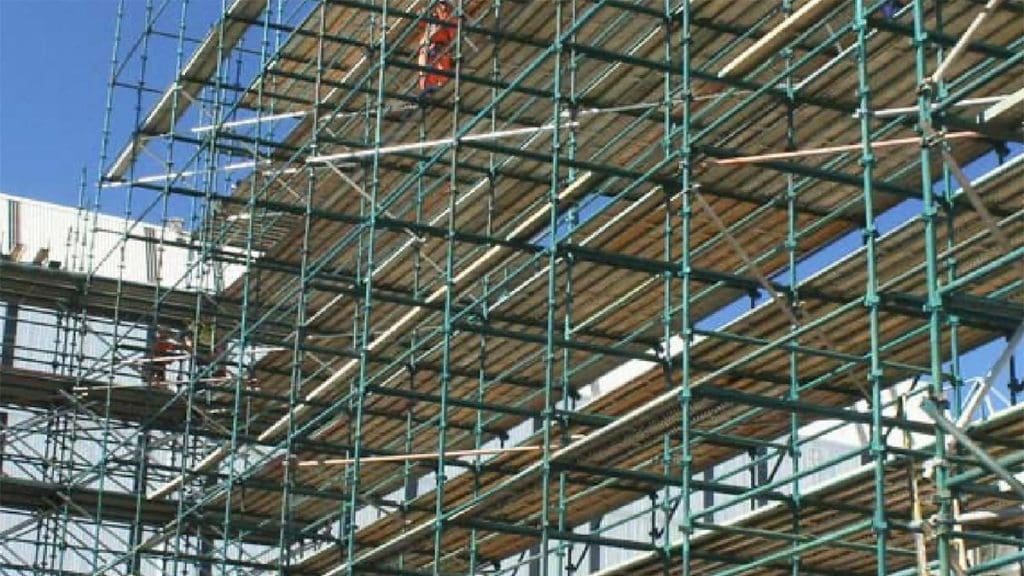
Kwikstage is a style of system scaffolding (often referred to as “modular” scaffolding), the name of which derives from ‘quick stage,’ reflecting how quickly scaffolders can assemble and disassemble it.
This type of scaffolding is used extensively in Australia, South Africa, Scotland, and Ireland. It is employed in projects of all types and scopes, from home construction to mining and refining operations.
To assemble a Kwikstage scaffold, erectors connect ledgers and transoms to standards using pins hammered into pockets, often called “V-pressings” due to their shape, on the verticals. To further accommodate the project, accessories such as side brackets (also known as cantilever brackets or hop-ups), non-slip platforms, double guardrails, toe boards, and mesh guard panels may be used.
As the name suggests, Kwikstage is favored for its speed. The fewer basic components make supplying equipment for a project more straightforward and the widespread availability of painted (non-galvanized) Kwikstage makes it a very affordable equipment option. Besides that, the fewer loose fittings ensure a stable vertical alignment, which allows optimum safety and productivity.
Mast Climbing Scaffolding
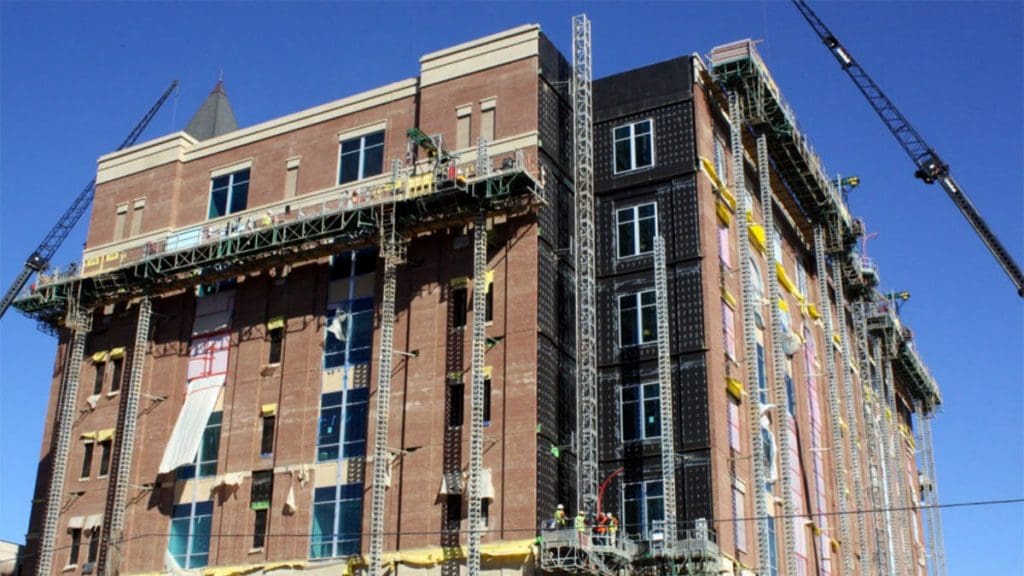
Mast climbers are a type of scaffolding that supports construction work at various elevated heights.
They’re suitable for work on brick or block walls as it can be adjusted to get to various heights in small increments. It’s also used for projects with limited ground area because it has a small base footprint.
Unlike suspended scaffolding’s wiring adjustments, mast climbers rely on fixed mast structures that are placed on the ground, with a powerful drive unit that controls the up and down movement of the platform. Guardrails must be included to provide fall protection.
Besides being a safe and efficient option for works at greater heights, mast climbers are also optimum for carrying extra heavy loads.

Mobile Scaffolding
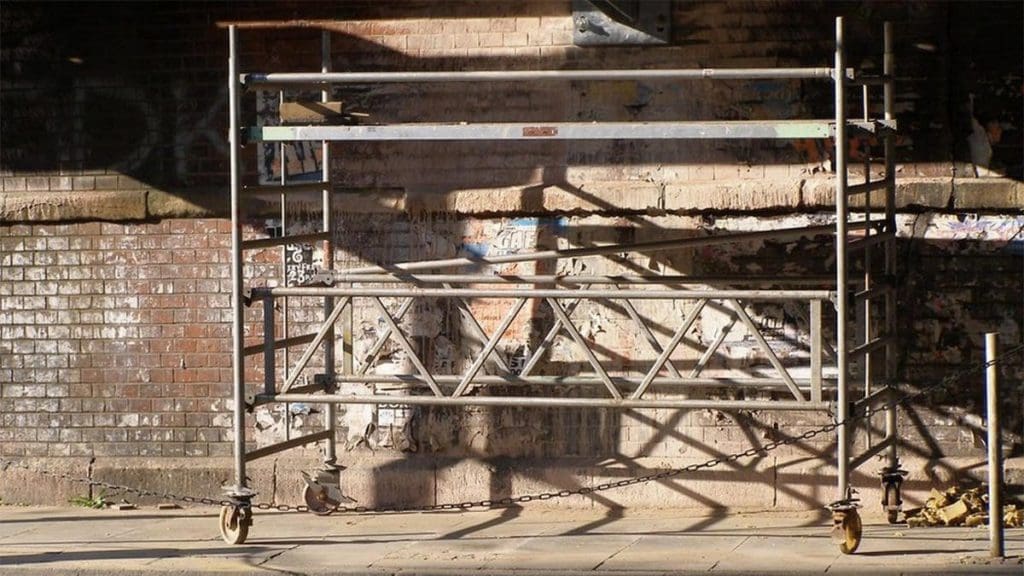
Mobile scaffolding, also known as movable or rolling scaffolding, is a type of scaffolding with moving working platforms.
This type of scaffolding is mainly for domestic use, small-scale projects, or jobs that involve a small team needed access to a series of specific locations. It’s suitable for tasks that require frequent changes in position, such as painting and plastering. It’s a safer and sturdier alternative to a ladder.
Mobile scaffolding is essentially an independent tower set on wheels or casters. Four vertical standards are connected horizontally and transversely to create a scaffold bay. The wheels come with wheel brakes that must be locked when a worker is standing on the scaffolding to ensure safety.
Mobile scaffolding provides an excellent balance of the ease and mobility of a ladder with the safety and stability of an erected scaffold. It’s compact and can be stored easily.
Pump Jack Scaffolding
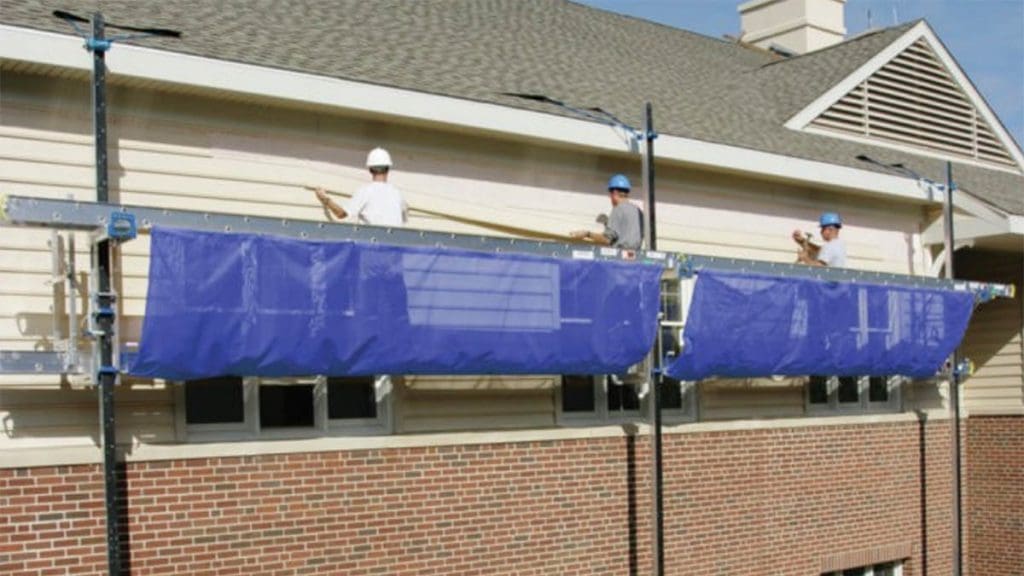
Pump jack scaffolding is a scaffolding system with planks that can be raised and lowered, similar to an automobile jack.
Pump jacks are used for construction and maintenance work that runs across multiple levels. These include painting and roofing projects that scale up to 48 feet.
It consists of scaffold planks that are supported and moved by adjustable brackets on vertical poles. Each pump jack bracket must have two positive gripping mechanisms to prevent any failure or slippage.
Pump jacks are similar to suspended scaffolding as they’re both used for projects that require moving up and down multiple levels. But the difference lies in the type of support they use. Suspended scaffolding relies on suspended ropes, while pump jack scaffolding relies on vertical poles to maneuver up and down.
Pump jack scaffolding is popular because it’s inexpensive and easily adjustable for various heights.
Ringlock Scaffolding
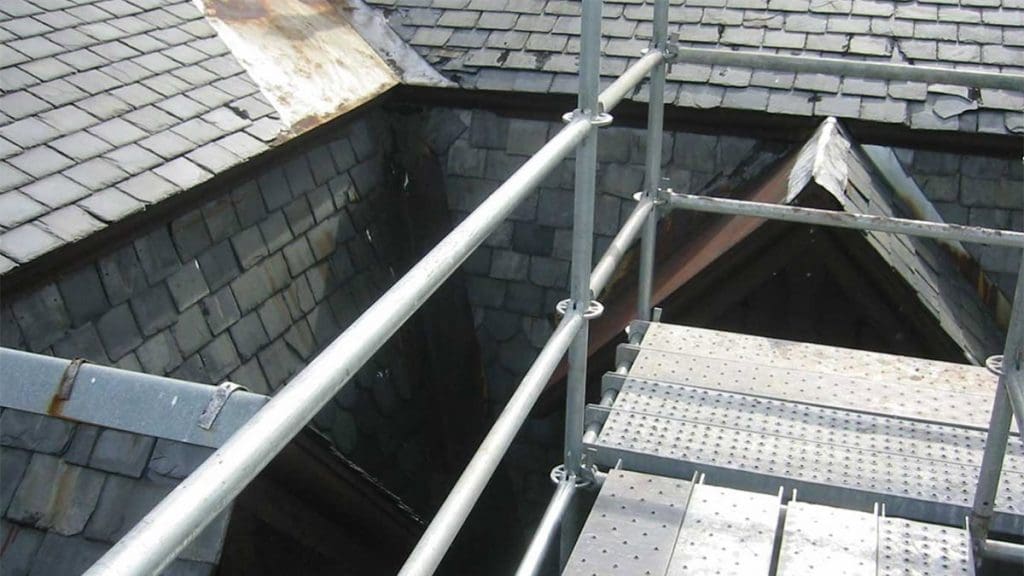
Ringlock is one of the most sophisticated types of system scaffolding with a unique rosette mechanism. It’s also known as pinlock scaffolding.
This versatile scaffolding system is often utilized in the construction of more complex, especially angular or rounded structures. It’s also used for support and access structures in offshore construction, industrial maintenance, and ship building.
To install ringlock scaffolding, up to four braces and four horizontals are attached to a single rosette using a hammer to lock the connecting pin in place. As with other system scaffolding, it has fewer basic components and multiple accessories that can be added to suit the construction project. For ringlock, accessories include rosette clamps, davit arms, spigot adapter clamps, swivel adapter clamps, and toggle pins.
Like most system scaffolding, Ringlock is favored for its high degree of flexibility and stability. It can be constructed and adapted to support various forms of structures. On top of that, it lacks loose components which make usage, maintenance, and storage easy.
Suspended Scaffolding
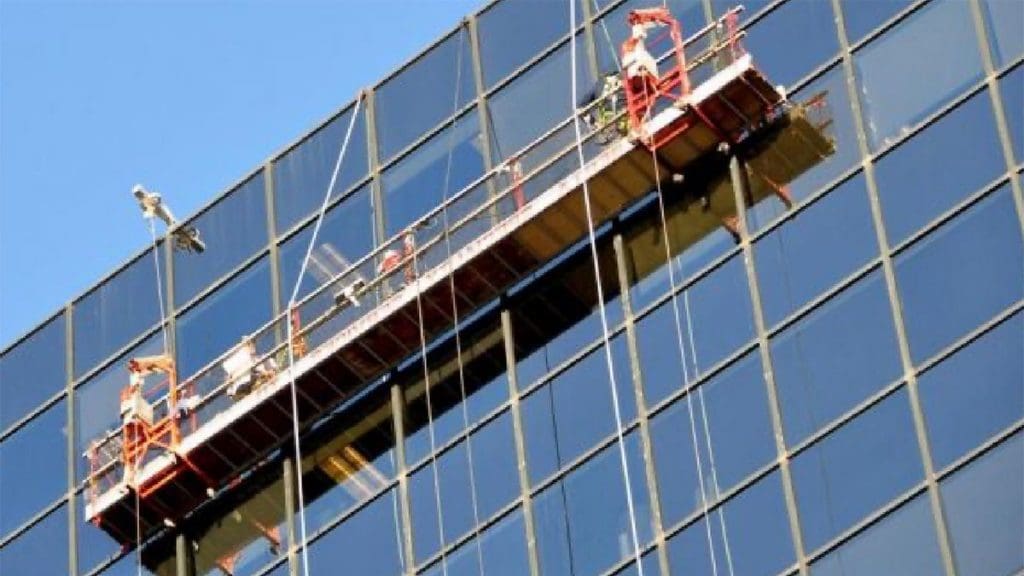
Suspended scaffolding is a type of scaffolding that is suspended from the top of a building. There are many types of suspended scaffolding, including Catenary, Two-Point (Swing Stage), Float, Interior Hung, Multi-Level, Multi-point Adjustable, Single-point Adjustable, and Needle Beam.
Suspended scaffolding is used for tasks that require workers to climb up and down various heights, such as window washing, ongoing high-rise building maintenance, and high-rise painting. This is why it’s often seen on skyscrapers and bridges.
This type of scaffolding consists of a platform suspended from above by cables and stirrups on each side of the platform. In some instances, an electric motor is used to raise and lower the platform as the situation requires.
Suspended scaffolding is highly beneficial for projects involving tall structures. It extends to greater heights than pump jack scaffolding, up to 72 feet. It’s also easy to set up, making it a time- and cost-effective solution. However, it’s not the best type of scaffold to transport heavy materials.
System Scaffolding
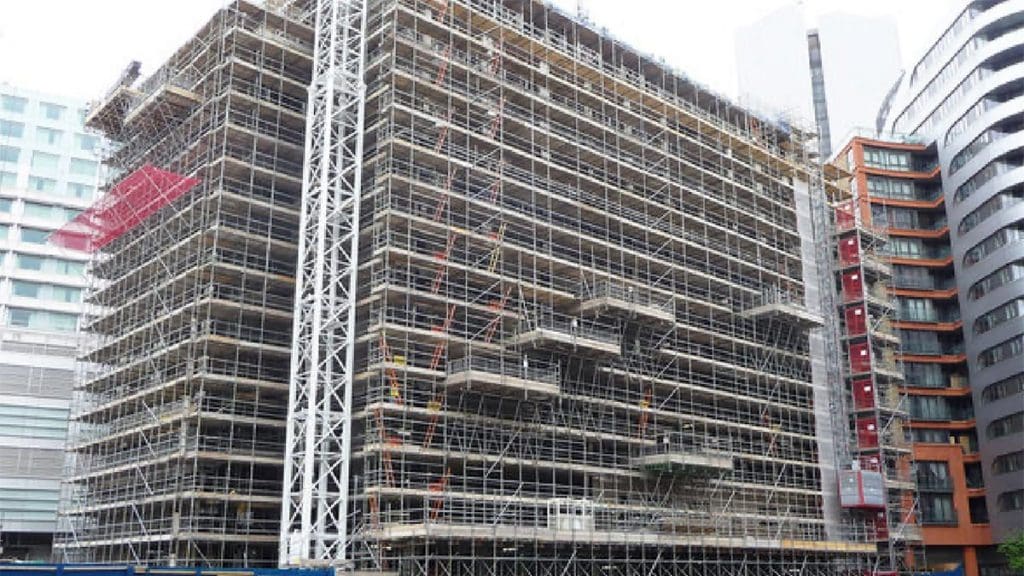
System scaffolding, also known as modular scaffolding or prefabricated scaffolding, is an umbrella term for types of scaffolding consisting primarily of vertical and horizontal pre-engineered components that connect together in a systematic fashion. Some types of system scaffolding include ringlock, cuplock, kwikstage, and proprietary types like HAKI, Safway, and Turner OCTO.
System scaffolding is used in all kinds of construction and maintenance work. But because the components are custom designed, it provides an excellent balance of speed and flexibility—faster than tube & clamp to erect and more flexible than frame & brace.
While each type requires different set-ups, all system scaffolds are constructed using a latching mechanism. This mechanism is used to connect vertical posts to horizontal or diagonal tubes, often at various angles. All system scaffolding consists of few basic components and many optional add-ons to adapt to various projects.
Many contractors opt for system scaffolding because it’s highly flexible, easy to erect, and reliable. Having fewer loose fittings makes the structure stable and safe.
Tube & Clamp Scaffolding
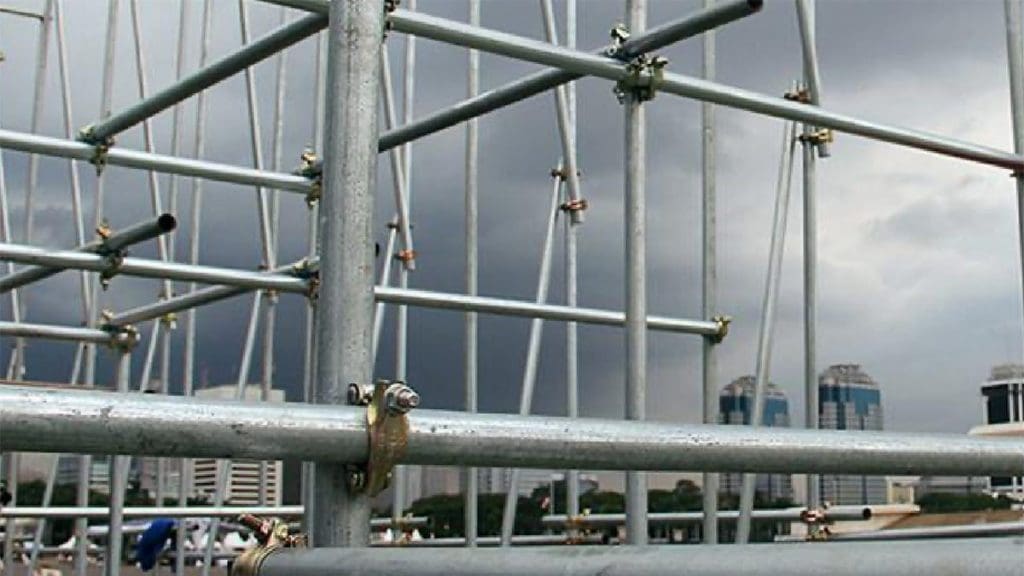
Also known as tube and coupler scaffolding. As the name suggests, this is a type of scaffolding that consists of steel tubes and clamps (couplers). It’s one of the oldest types of scaffolding using steel.
Due to their flexibility, these scaffolds are frequently used in congested areas. These scaffolds can be assembled in multiple directions, making them an excellent option for work surfaces with irregular dimensions.
To assemble, horizontal tubes are connected to vertical tubes using right-angle clamps. Diagonal tubes are periodically connected to the scaffold via swivel clamps in order to stabilize the scaffold. The horizontal tubes act as support for walking platforms.
An advantage of using tube and clamp scaffolding is that it’s easy, if time-consuming, to assemble as only four basic parts are required. This simplicity also makes material planning more straightforward. The steel in this type of scaffolding is corrosion resistant, meaning it can withstand harsh weather conditions.